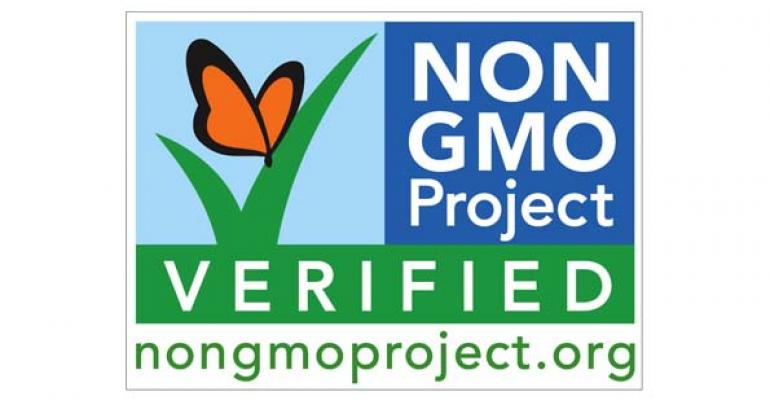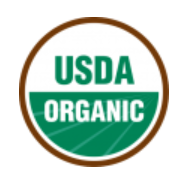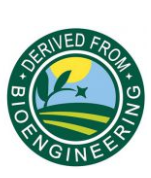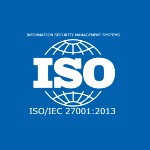Questions CPGs Should Ask to Make Sense of a Confused Organic/GMO-Free Marketplace
Posted by | Fuld & Company
As Organic Week in Washington D.C. kicks off, Fuld & Company Examines Issues Regarding the Future of Food Labeling
What’s driving consumers’ increased appetite for organic and non-GMO food?
The American food landscape is facing a transformation driven by reshaped consumer preferences. A younger demographic (Millennial and Gen Z) that values transparency, sustainable farming practices and locally sourced ingredients are changing the way food is represented on the grocery store shelves.
This dynamic is causing these consumers to move away from large legacy brands and move towards smaller, more innovative CPGs that offer new food products and those that develop new values-aligned product categories.
However, even though most consumers want these food options, there is mounting marketplace confusion about how the product categories overlap, and how they are different from one another.
To add a layer of complexity, new disclosure requirements regarding the presence of Genetically Modified Organisms (GMOs) will likely add to ongoing confusion in the near future. To capture the full value of the products that address consumer concerns and values, CPGs will have to prioritize clear and informative labeling. Products displaying a more precise label and strong branding helps consumers navigate an increasingly clouded range of choices and educates them about the value of premium products.
How is values-based consumerism influencing purchasing decisions?
Macro trends are guiding consumer purchasing; like dedication to health and wellness and the desire to– use or– consume products that are environmentally friendly, non-exploitive and cruelty-free is increasing. According to the Organic Consumers Association, about 10,000 American famers have made the transition to organic food production on about 2.3M acres of land; and organic’s popularity shows no sign of slowing as young consumers view the brands they purchase as an expression of their personal values. “Organic” as a product category is a near-perfect fit for prevalent consumer values as it entails farming that is free from synthetic chemicals and GMOs as well as production methods that are sustainable, non-exploitive and humane.
However, the prevalence of conventional (i.e., non-organic) farming practices limits the acreage used to grow organic crops and the amount of domestically produced organic foods, so other categories that are not necessarily organic like; non-GMO, fair-trade, and clean label, have emerged to tap into values-based consumerism. One of these categories – non-GMO – is intentionally not well defined and that, too, may be causing consumers to overlook distinctions between it and the more clearly defined organic category.
Organic product sales in the U.S. grew from $18 billion in 2007 to over $50 billion in 2017, but rapid growth does not mean greater consumer understanding, and often consumers make purchasing decisions based on how the labels communicate value. In 2017, the University of Florida’s Institute of Food and Agricultural Science conducted a consumer survey to find out how much of a premium consumers were willing to pay for organic and non-GMO products. The survey determined that consumers were willing to pay an extra .35 cents for a 12-pack of granola bars labeled Non-GMO Project Verified, but only an additional .09 cents for the same 12-pack of granola bars with the USDA Organic label.
What is the difference between non-GMO and organic?
As alluded to above, products certified as organic do not contain GMOs, so the willingness of the University of Florida survey respondents to pay a higher premium for non-GMO than organic displays a clear lack of understanding of what they’re paying for.
A major contributor to this lack of awareness is meaningless non-GMO labels. The decision to label products as non-GMO is excessive, as there are only ten commercial crops that are genetically modified– albeit two soy and corn, which are often “hidden” ingredients in an incredibly broad array of products. For further consideration, products that do not contain ingredients derived from those crops do not contain GMOs, so the labeling is superfluous.
For example, The Non-GMO Project is an industry group that allows the use of its “Non-GMO Project Verified” seal on non-GMO food products that have gone through its verification process. However, the use of the seal is not limited to products containing ingredients derived from crops that may have been genetically modified. In essence, any product that does not contain GMOs qualifies, so in many cases consumers are purchasing products with the seal and thinking they are buying a premium product, when they’re actually not. Of course, all organic products are non-GMO and yet bear both the Non-GMO Project Verified and USDA Organic seal. While it’s understandable that organic producers want credit for being non-GMO as well, the appearance of both seals on most organic products may be causing some consumers to assume they mean the same thing.


Images sourced: USDA.gov and The Non-GMO Project
What’s ahead in 2021?
As mentioned earlier, label-induced confusion is about to worsen as The FDA requires that by January 1, 2022, all foods containing genetically modified ingredients be labeled as containing bioengineered, i.e., GMO, ingredients. The legislation is known as the National Bioengineered Food Disclosure Standard (NBFDS) and it will exacerbate consumer confusion because:
- The USDA designed a seal that can be placed on packaging that satisfies the disclosure requirement. In spite of this, CPGs have options as to how they can disclose the information on their packaging. The seal is not required, but scannable, smart-phone enabled links will access the disclosure as an allowed means of disclosure. That said, some worry that consumers will not take the extra step to verify on their phones, and therefore companies lose potential sales opportunities.
- Some foods containing GMOs can be processed in such a way that its GMO-affected DNA is removed from the product (for example, when soybeans are crushed to make meal and oil, the oil contains no genetic material). According to the NBFDS, these foods are derived from foods containing GMOs, but they do not actually contain GMOs– therefore disclosure is not required. For further consideration, The Non-GMO Project does not allow its seal on products derived from genetic material, regardless of the presence or absence of GMOs, and the presence of GMOs is interpreted differently: the National Bioengineered Food Disclosure Standard only requires a disclosure if the modified genetic material is a primary ingredient, whereas products with the Non-GMO Project Verified seal requires the complete absence of GMOs.
- The usage of the labels is murky; The Non-GMO Project Verified seal tells people what is absent from a product, while the bioengineered (i.e., GMO) label tells consumers what is present
An example of a label communicating the “Derived from Bioengineering.” By the USDA’s definition, this is a seal informing consumers what is not in a product.
Where are the opportunities for CPGs?
While consumer preferences change, the CPG industry is also changing and producing new products and product categories to keep up with consumer demand for innovative products, but it’s not as clearly defined as would be assumed. As new labels and certifications with varying degrees of meaning emerge, the challenges of articulating the value of premium products only increase.
But within the marketing noise of these CPG segments, there is an alignment between consumers and premium product producers that strategic CPGs can use to break through it. Simply put, producers of premium products do not like consumer confusion as it blurs value perception, and consumers do not want to be confused – they want to purchase brands that are consistent with their values and aspirations, and to do this they need to be well informed. Clear, accurate labeling will be a differentiator for strategic CPGs, and the use of effective branding to educate consumers as to why some products are worth more than other seemingly identical products—is paramount.
Tags: Agribusiness, Competitive Intelligence, Consumer Products & Retail, Consumer Trends




















